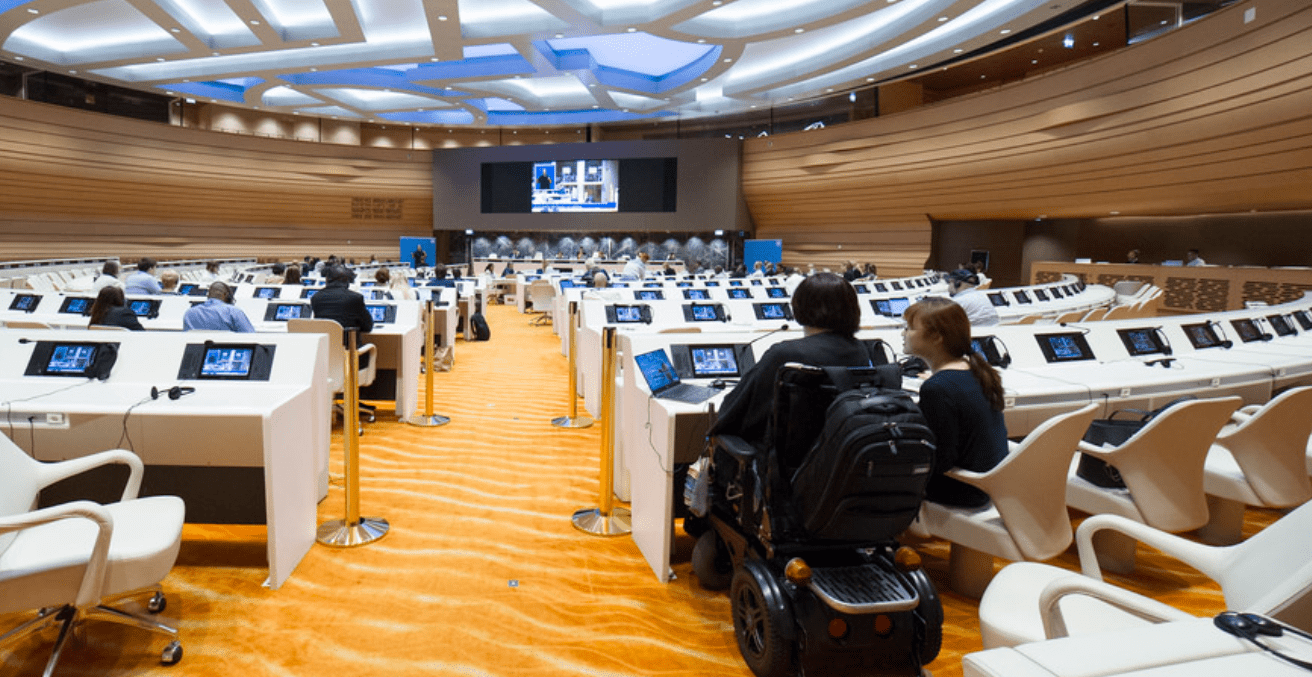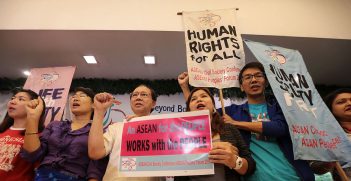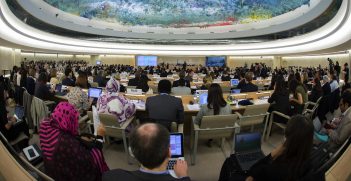10 Years of the Convention on the Rights of Persons with Disabilities

Disability has traditionally been seen as a welfare issue. The Convention on the Rights of Persons with Disabilities sets an agenda to transform policy frameworks to an approach based on human diversity.
3 December 2018 is International Day of Persons with Disabilities. It marks both the 10th anniversary of the Convention on the Rights of Persons with Disabilities (the Convention) and the establishment of the UN Committee on the Rights of Persons with Disabilities (the Committee) on which I will sit from January.
The Convention was negotiated with unprecedented participation by people with disability and their representative organisations. “Nothing About Us, Without Us” was a central claim of disabled persons organisations during the negotiations. James Charlton adopted these words as an antidote to what he described as the powerlessness and oppression of people with disability. It was a recognition of decades of public policy that failed to include people with disability and left them trapped in systems of care, treatment and protection. Charlton’s words reflect the transformative nature of the Convention and have come to represent a claim to rights and recognition following years of exclusion and social isolation.
Theresia Degener, the current chair of the Committee, has described the Convention as a vehicle for transformative equality: a concept of equality that removes barriers to inclusion and initiates structural change to respect and accommodate difference by removing the detriment but not the difference itself. If substantive equality is to be achieved there needs to be fundamental transformation in the way disability is conceptualised in political and policy discourse and the failure of public policy to include the voices and experiences of people with disability.
The fundamental premise of the Convention is that disability is just one aspect of the human condition. This is a significant shift away from the prevailing social conceptualisation of disability that reflects a deficit approach: where disability is viewed as a problem: an individualised issue where vulnerable individuals require care, treatment and protection within a social welfare regime to deal with their “special needs”.
The deficit approach
The experience of people with disability in many ways is still framed by public discourse and policy which perceives disability as deficit. Public policy locates the causes of social inequality and disadvantage in the body or mind of individuals with impairment. People with disability are viewed as not meeting the normative standard. This assumes that both problems and solutions lie with people with disabilities rather than with society, with little or no recognition of the role of the social environment in disabling persons with impairments. This approach to disability as an individual deficiency has reinforced notions of disability as difference. The response of law and public policy has been a focus on separate parallel institutions and services, such as residential care facilities, special education, sheltered employment and justice diversion measures. These policy responses have been central to perpetuating systemic disadvantage and ongoing violations of fundamental human rights. People with disability are stripped of legal personhood, institutionalised in closed facilities and exposed to violence and abuse.
People with disability are segregated from many life domains and excluded from key social institutions. This has isolated them, and the issues that disability raises, from mainstream political discourse and public policy. Further, segregation in education has meant historically low levels of academic achievement, keeping people with disability out of key professions and public administration. As a result, people with disability have not been represented in public decision-making processes on law and policy. Disability has not been an area for academic concern in the areas of law, policy, public administration, planning and architecture, which has led to limited understanding of the issues raised by disability.
As such, people with disability are rarely viewed as “normative citizens”, but rather as a vulnerable “special interest” group. This suggests that – apart from care, protection and welfare – disability is irrelevant: it only needs to be considered in respect of special needs, but can be otherwise ignored. Hence, disability has and continues to remain largely invisible on the policy and equity agendas of governments.
This has meant that impairment and the presence of disability are seen as the basis for legitimate restrictions of human rights, including the most fundamental in the form of legal capacity. People with disabilities remain the group whose legal capacity is most commonly denied in legal systems worldwide. As the Committee has noted, “legal capacity is indispensable for the exercise of civil, political, economic, social and cultural rights”.
The diversity approach
An alternative approach to conceptualising disability is to view disability as part of human diversity, or as one aspect of the human condition. Impairments should be seen as not exceptional or abnormal but as an infinitely various and universal feature of the human condition. It’s been argued that no human has a complete repertoire of abilities, suitable for all permutations of the physical and social environment; we are all relatively limited in some way, at some time. It is the characterisation and treatment of particular permutations of the human condition as disabilities that constitutes someone as a “person with disability”. It is the perception and labelling of traits that do not sit comfortably within dominant social arrangements, regardless of whether those traits would be irrelevant with different social arrangements, that makes them matter.
The fundamental tenet of the CRPD approach is universalism: the modification of the social norm to reflect human diversity. Politics, policy and law need to be fashioned around a complete, comprehensive vision of the human experience if they are to meet the needs of real-life subjects. We need to embrace the fact that human reality encompasses a wide range of differing and interdependent abilities over the span of a lifetime.
The challenge for governments is to undertake a comprehensive rethink of social structures and practices to embrace disability as part of the human diversity. If we are to achieve this, people with disability need to be central to this process . The Convention sets out obligations on states parties to work closely with people with disability and their representative organisations to inform and shape reforms. It is only through the leadership of people with disability and strong interdisciplinary academic research we can drive sustainable systemic reform for just outcomes for people with disability.
The Convention on the Rights of Persons with Disabilities is a truly 21st Century convention. It enshrines a contemporary conceptualisation of disability: one that recognises disability as just one aspect of human diversity. It also acknowledges that people are not defined by just one personal characteristic, that we all experience disability and discrimination in a multiplicity of ways. It recognises that governments and civil society need to work in partnership to achieve the Convention’s purpose and objectives. No countries can say they have met all these challenges.
Rosemary Kayess was elected to the United Nations Committee on the Rights of Persons with Disability 2019–2022 in June 2018. She is a human rights lawyer and Interim Director of the Disability Innovation Institute at UNSW.
This article is published under a Creative Commons Licence and may be republished with attribution.





